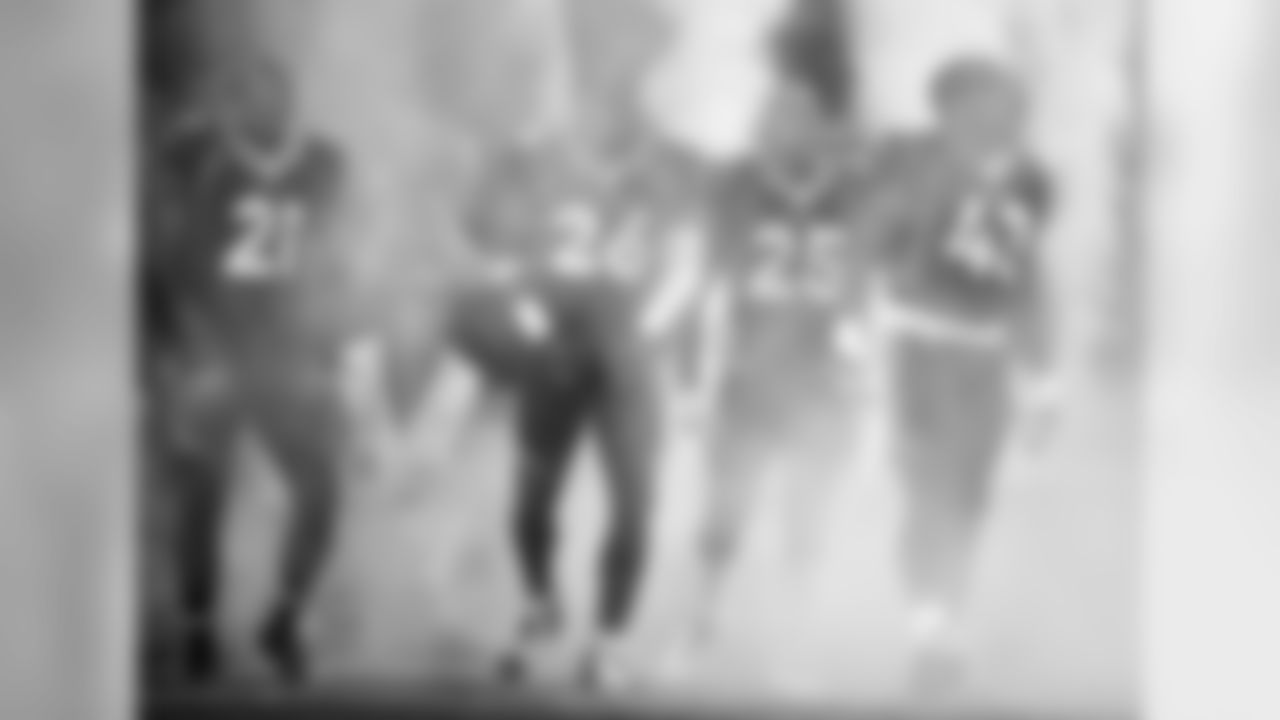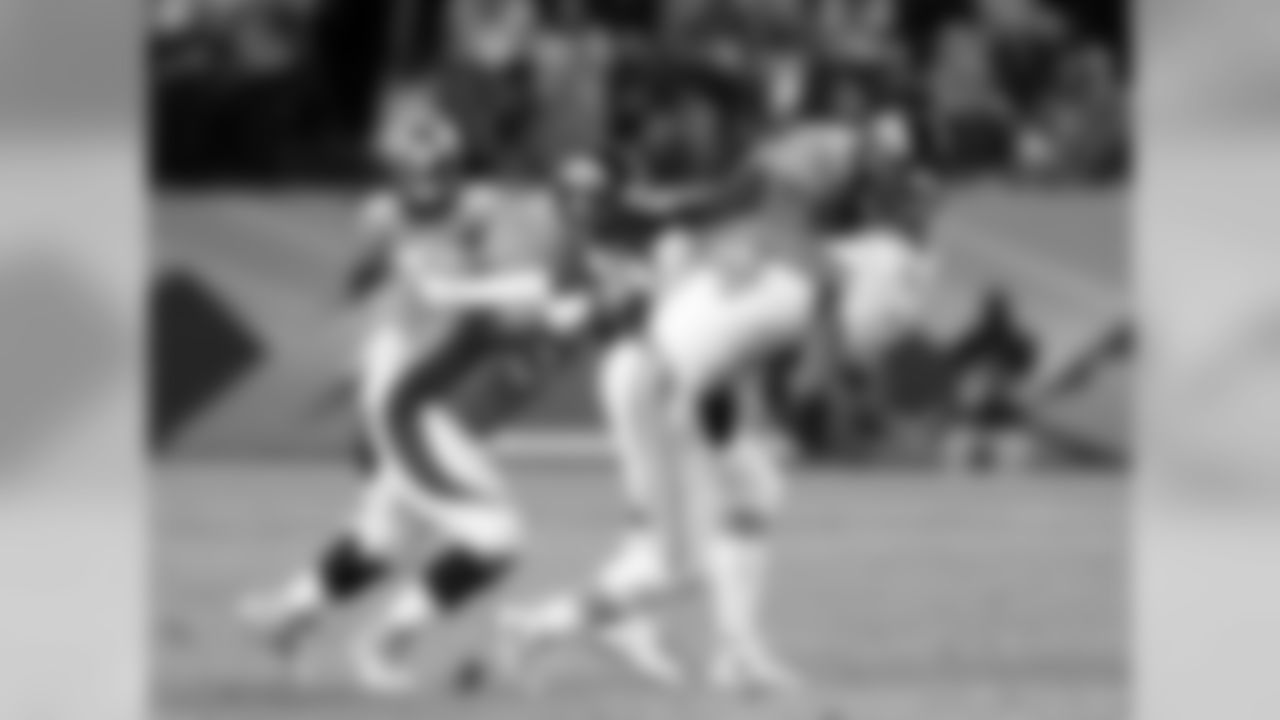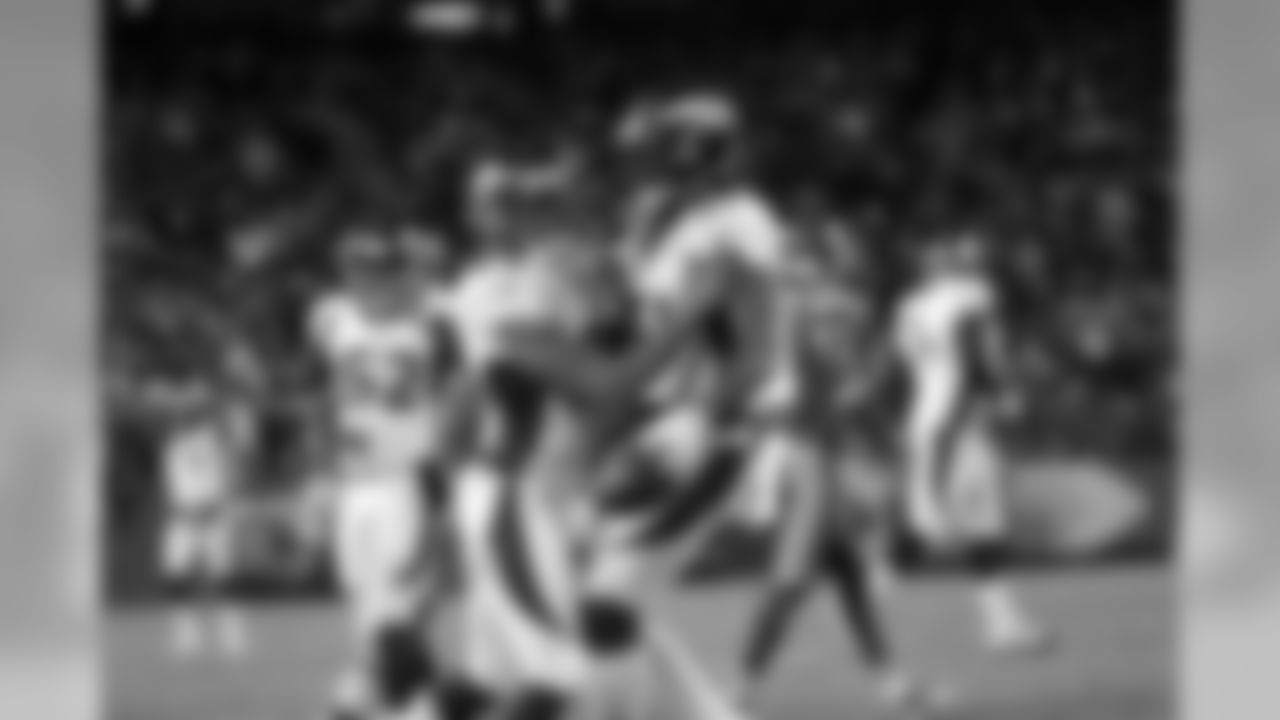**
ENGLEWOOD, Colo. -- **It seems that everyone around the Broncos has their story about when they first knew that the potential for something special existed in Chris Harris Jr.
From my perspective, I remember the day well: Oct. 23, 2011. The Broncos were in Miami Gardens, Fla., to face the Dolphins. You might remember that as the first of Tim Tebow's comebacks that season. But I also recall that it was when injuries and circumstance shoved the undrafted rookie into the game in the final moments of regulation and the overtime that followed.
It doesn't take decades of studying this sport to know that when a rookie cornerback with 20 snaps is on the field for overtime, he's going to see the football fly in his direction.
Miami quarterback Matt Moore obliged. On the first play of overtime, he locked in on wide receiver Brandon Marshall, then the Dolphins' top target. Harris, lining up as the slot cornerback, got caught in traffic, but then sped toward Marshall as he stopped his route 9 yards past the line of scrimmage. Marshall turned back, and the ball arrived -- but Harris deflected it first. The Dolphins went three-and-out.
One-hundred and ninety-two seconds later, Moore tested Harris again, looking for Davone Bess. Bess moved around and outside Harris before turning back inside 20 yards past the line of scrimmage. But Harris seemed to have eyes in the back of his head; he knew how to keep a glimpse on Moore while knowing where Bess was. Moore's pass fell incomplete.
Harris' coverage unsettled Miami's offense, and Moore no longer had the option he felt he could exploit, because Harris proved worthy of the challenge. That set up the strip-sack fumble that followed and pointed Denver to a win that snapped an eight-game road losing streak.
This was the NFL world's introduction to Chris Harris Jr., the first of so many stellar performances that helped him become one of the game's elite cornerbacks, a status often affirmed by the analytical rankings of ProFootballFocus.com, and confirmed by the five-year contract to which he agreed with the Broncos.
Look through the best photos of Chris Harris Jr. from his time with the Broncos.



























On that typically stifling South Florida afternoon, Harris played with confidence that made him twice his size. And that's when I wrote in the notes I keep on every game, "Love 25's awareness; plays with chutzpah."
Some noticed earlier -- as soon as the 2011 training camp, when he volunteered to take repetitions against Brandon Lloyd, then the team's No. 1 wideout, just months removed from a spectacular Pro Bowl season. That's when Champ Bailey's eyes caught a glimpse of Harris, then a fifth-stringer trying to make an impression and having little time to do it.
"Just the hunger -- that's really what separates guys, is the attitude. A lot of guys don't have the attitude," said Bailey. "They have the talent, this and that, the intangibles. He had the attitude, and he had the right attitude."
That attitude sustained him through some tough times. A week after his emergence against the Dolphins, he started against Detroit, and found himself working against Megatron himself, Calvin Johnson. During the Lions' 45-10 romp, quarterback Matthew Stafford often audibled Johnson inside to work against Harris, on whom he had a 46-pound advantage. Eight Detroit receptions were at Harris' expense.
"I played every snap as hard as I could," Harris said back then.
Rookies have ups and downs, and Harris was no different, so the results weren't always there at first. But as Bailey noted, the attitude was.
Harris persisted after that stern early test. He studied film with the vigor of a Harvard law student. He learned and applied that knowledge to the field. He improved. He only allowed one touchdown in his first regular season, and that shouldn't have been allowed, since Minnesota's Percy Harvin shoved him to the ground to set up the score for what appeared to be an obvious example of offensive pass interference.
Harris' role gradually expanded, along with his abilities, whether he faced small, speedy targets or big, powerful ones. By the middle of the 2012 season, he worked as a right cornerback in the base defense and in the slot when the Broncos went to nickel. Teams tested him week after week, and he passed -- and made them pay with two pick-sixes, including a franchise-record 98-yarder at Baltimore that set the Broncos en route to their only win at Baltimore since 1975.
"What really helps is his attitude toward everything," Bailey said then. "He doesn't think there's anything he can't do."
And that is why his quick recovery from the torn anterior cruciate ligament he suffered last Jan. 12 against San Diego came as no surprise. Harris wasn't merely as good as he was before the injury -- he was better. He answered every question that lingered.
The attitude evident in his play, his leadership, his study habits and his rehabilitation this year is why he now has a massive contract extension in his hands.
He is the epitome of everything the Broncos want to build as an organization in terms of player development: an unheralded prospect who capitalized on his opportunity, grew from his experience and became everything his talent and intelligence would allow him to be.
John Elway's goal as the team's executive vice president of football operations and general manager is simple: build an organization that sustains its momentum through young players that are cultivated. If you have a surplus, yes, you have to eventually let some go; the reality of a salary-cap league dictates it. But the best of the best will be around for the long term.
And that is Harris.
"It's a priority for us to develop and reward our own players as we continue assembling the best possible team," Elway said. "Whether it's on the field or in the community, we are proud to have Chris representing the Broncos for many years to come."
Three years after he first walked into Dove Valley, Harris has the locker-room stall that Bailey long occupied, at the corner between the wide receivers and the defensive backs. It's a nexus of the locker room, where the two groups who face each other in one-on-one drills fraternize, talk about technique and moves -- and a little trash, as well.
It's appropriate that Harris calls that spot his home at the workplace. He's never been shy about asking for advice, and he's equally eager to share it. For years, Bailey offered counsel to his teammates. He made them better.
In that regard, Harris is Bailey's heir. The counsel he gives to current and future Broncos reflects what Harris learned from the future Hall of Famer.
Perhaps the only place in the locker room equally appropriate for Harris to hang his helmet would be just around the corner and in two spots. That's where Ring of Famer Rod Smith held court for 14 seasons.
Smith and Harris share an undrafted pedigree. Both kept the chip on their shoulder even after they found NFL success. Both used their draft snub as fuel for their rise: angry at all these teams which passed them up, each would make the other 31 clubs pay.
Harris isn't just at the liveliest corner of the locker room; he's at the intersection of Broncos legends. It's his turn now to hold up the Broncos' lineage of lockdown cornerbacks and undrafted stars.
Both legacies are now in secure hands. Harris is special, perhaps the best at his craft working today. As he showed against Buffalo last week, if teams don't avoid him, he makes them pay; against the Bills, he posted the 21st sack/interception game for a Broncos defender since the sack became an official statistic in 1982.
"I just go by what I see. I just look at tape. He's playing better than anybody in this league," said Bailey.
And now Harris has his reward: a life-changing contract and a growing place as part of the Broncos' storied lore.
Do you have a question for Andrew Mason? Ask it here and you might be in this week's Mailbag!





